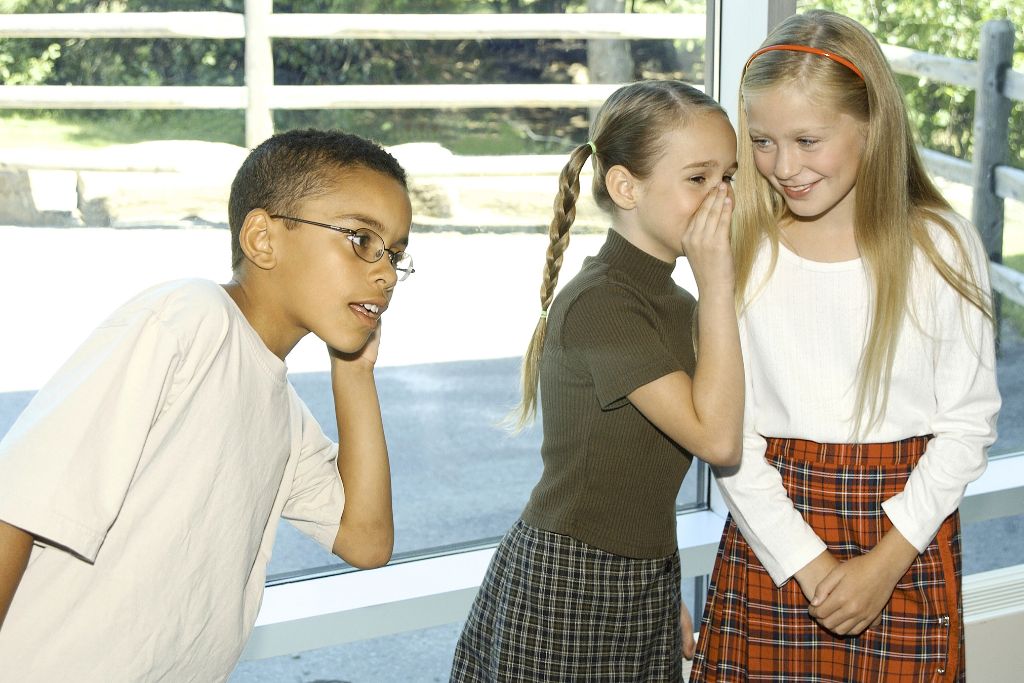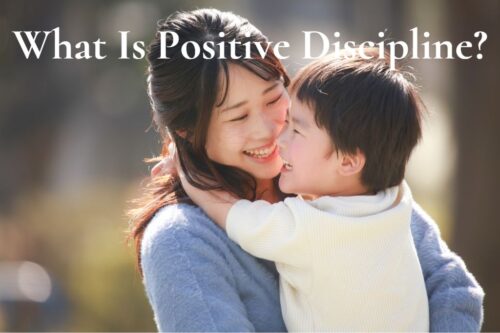Helping Kids With Friendship Troubles
If you have kids in late elementary school, you’ll probably have to answer lots of questions relating to friendship troubles. This is the age when kids begin to learn how to navigate relationships with other human beings, resolve conflicts, assert who they are, and negotiate differences of opinion and values, all while discovering who they want to be in the world. This process takes many years, possibly into adulthood. But this is when it all starts. And the start is pretty shaky. Our children don’t have many or any skills to do all this growing up. So it’s important for us to maintain communication with them and guide them through this process with love, patience, and knowledge.
In this article, I will attempt to give you some ideas for how to guide your child through some of the typical friendship troubles at this age.
Table of Contents
Read books that talk about friendship troubles
Books have always been my first go-to when having to teach kids about topics I wasn’t fully confident about. Some of the books that I read with my kids that talk about friendship issues are from the American Girl book collection:
- Drama, Rumors, & Secrets – Staying true to yourself in changing times;
- Friendship Troubles – Dealing with fights, being left out, and the whole popularity thing;
- Friends – Making them and keeping them;
- Stand Up for Yourself & Your Friends.
Although these books are written for girls, they talk about issues that are common for all children. I wish they made the books more inclusive. Our boys also need to learn how to navigate friendships in a healthy manner and how to communicate with other children.
Guided interactive journals
At the same time, I started helping my kids to develop their own sense of self and self-appreciation. We used two journals in which they use self-exploration to get to know themselves better, to appreciate who they are, and to help them create a path for who they want to be in life. These are the Big Life Journal for Kids 7-10 (They also have a journal for teens) and the I Am a Rebel Girl – a Journal to Start Revolutions by Francesca Cavallo and Elena Favilli.
The Big Life Journal for Kids works on developing a growth mindset and confidence and encouraging conversations between kids and a trusted adult. The other journal, I Am a Rebel Girl – a Journal to Start Revolutions, inspires kids to think critically and challenge their perspectives, promotes body love and acceptance, and helps kids discover their skills and talents, and imagine who they want to become. Both books are interactive, powerful tools for helping our kids feel good about who they are.
There are lots of other journals on Amazon. You don’t have to get the ones that I mentioned here. These are the ones that I happened to get for my kids, but you can find lots of other options to choose from, so feel free to explore.
Personal journaling
When the friendship troubles began for my daughter, I bought her and my son a cute journal where they could write their reflections. Make sure you buy a blank journal for this type of activity. When you search for “kids journals” online, you get mostly notebooks with prompts and questions. So you want to search for “blank journal for kids.” An example is this journal from Ricco Bello on Amazon.
So now you bought a journal for your child. Please don’t just hand it to them and tell them to go reflect on their own. Our kids don’t know how to journal. This is a skill that we have to teach them. As with anything, we have to invest a lot of time in teaching our children about life and the world.
You can write a question at the top of the page, and your child can write an answer under the question. You may wonder why you can’t just talk with your child about these friendship issues. Talking is absolutely necessary! But giving our children the time to be with themselves in silence and reflect on what’s going on, what they’re feeling, what they’re learning along the way, and how they want to proceed is more powerful than just rushing through in a conversation. When they write things down, thoughts slow down and learning deepens. Also, kids have the opportunity to go back and reread their notes to help them in the future.
First, I taught my kids how to write the date in the journal. We began the journal together. My first goal was to help my daughter acknowledge her emotions. We know that we first have to address our emotions before we can begin to reason.
The types of questions you will write for your child depend on their situation and the struggles they’re having. For my daughter, the first question that I wrote was “What are you feeling now about tomorrow?” Notice that the question is vague enough that it offered my daughter the flexibility to think of whatever felt important to her regarding the topic we had been discussing. I gave my daughter plenty of time to list all the feelings she was having. This was a wonderful exercise for her to pay attention to the messages that her body was sending.
Next, I wrote another question: “What urges do you have? What do you feel like doing?” I reassured my daughter that it was safe for her to write whatever her urges were and that I wouldn’t judge her for having those urges. It’s important to teach our kids that urges are natural responses. They’re not bad. But some urges can have bad consequences if we act on them. When we teach our kids to regulate their behaviors, we are not trying to stop the urges, but rather we teach them to notice their urges and to choose whether it’s appropriate to act on them.
After my daughter wrote down her urges, I could see that her immediate reaction to the stress she was feeling was to run away. This is the flight response. She didn’t want to go back to school. She was even fantasizing about transferring schools. But after she acknowledged her urges, they didn’t feel as intense.
My next question for her was “What do you wish the girls understood about you?” Again, this question was relevant to the situation that my daughter was going through. I am giving it here as an example. You will have to figure out what questions your child will need to help them process their emotions and feel listened to.
After we explored how she was feeling, we went into problem-solving mode. My daughter wanted to know how to manage conversations with her friends. She gave me several examples of topics that were contentious, accusations they were making, and ways my daughter tended to respond, and we identified a few patterns.
We made a list of things to do and not do in conversations. The goal was to de-escalate conflict and work toward a resolution. Here are some of the things that my daughter wrote down in her journal:
Don’t do these:
- counter-attack
- over-explain
- get lost in emotions
- rush to give an answer
- throw words at them
- infer
These were all ways my daughter was getting defensive in her interactions with her friends. Instead, we tried to think of ways that she could stay in control when she was feeling overwhelmed by emotions.
Do this instead:
- focus on your breathing
- slow down and pause
- talk about yourself (I statements)
- listen carefully
- reflect back
- disengage when it feels too much
One of the things that I wanted my daughter to understand is how easily we escalate a conflict without even realizing it. Then, I wanted to teach her ways that she could stay present in the conversation, aware of how her responses might make things worse or better, and how she could stay focused on how everyone was feeling instead of getting overwhelmed by her own emotions. I explained to her the importance of acknowledging other people’s points of view, clarifying their statements, protecting her own reality, and staying focused on finding solutions.
Things to say to de-escalate conflict
- When others make vague comments or accusations:
- Instead of inferring, ask, “Can you be more specific?” or “Can you give me an example?”
- When you are confused about what the issue is:
- Instead of inferring, you can say “I’m not sure I get this. Please help me understand.”
- When others say “You remember things wrong”:
- Instead of accusing them of lying, you can say “I know what I saw/ate/said” or “That’s not how I remember things” or “We seem to remember things differently”
- Reflect back, check for understanding, and clarify:
- “Let me see if I got this right” or “Let me see if I understand” or “I heard you say …. Is that right?”
- When others try to get you to share information you don’t want to share:
- Instead of feeling pressured to share, say, “I don’t want to talk about that” or “That’s not something I talk about” or “I don’t feel comfortable talking about that.”
- Focus on solutions:
- “Where do we go from here?” or “How can we fix this?” or “What do you need from me?”
What are boundaries?
I won’t spend too much time on boundaries here. But it’s important to point out that boundaries are managed from the inside, not on the outside.
In the example above, where maybe friends are pushing your child to talk about things they are not comfortable sharing, protecting their boundaries doesn’t mean “Please stop asking me about this.” It means your friends can ask, but you can choose not to answer. Similarly, when you ask your friends what they need from you as you’re focusing on solutions, it doesn’t mean you must do what they request. But you can consider their need and see if it is something that feels appropriate and you can accommodate. Ultimately our children need to understand that they always have a choice.
Define healthy friendships
This is a huge issue that I feel like we were not taught when we were kids and still struggle with as adults.
As we discuss this topic with our kids and teach them what healthy friendships look like, we can use a combination of telling and asking curiosity questions.
Some of the topics that we can discuss with our kids:
Feeling safe in the relationship
How do you feel after you spend time with this friend? We want our kids to understand that after spending time with their friends, they should feel good, not bad.
Common interests
Explore getting to know yourself first. What do you like to do for fun? What things interest you? How do you like to spend your time? How do you like to relax or rest? What are some places you like to go? What books do you like to read? What values are important for you? Do you like to spend time with your family? And so on. You can help your child explore many aspects of who they are and then understand that someone who shares their interests, values, and views of the world is more likely to become a friend.
Set expectations
What do you need and want in a friend? This is a good time to create an image of what a good friend is for your child. Many kids learn about this in school or from books. It can be a fascinating discussion to have and discover what is important for our children.
This is the time to discuss what friends don’t do. Friends don’t pick on you, tease, bully, or isolate you, talk badly about you behind your back, or push you to do things that can get you in trouble.
On the contrary, friends give you the feeling that you belong, they accept and appreciate you for who you are, they are open to compromise, tell you when you are wrong with kindness and respect, and protect you.
We have to help our children learn that they deserve to be treated well. It is never ok for anyone to mistreat them. Sometimes children may begin to justify someone’s bad behavior and begin to believe that they deserved the bad treatment. But the truth is it doesn’t matter why someone treated them badly and the motivation does not excuse the behavior. Whatever issue there was, it can always be resolved safely and respectfully.
Choose friends you like
Many kids enter friendship relationships wanting to be liked. They crave acceptance and belonging and are so thrilled when someone wants to be their friend, that they forget to ask themselves, “Wait a minute, but do I like this person?” Helping our children focus on what they want will steer them from the scarce mindset of “I’m so lucky someone wants to be my friend” to the abundant mindset of “I get to choose my friends. I deserve to choose who I share my energy with.”
Some questions to ask are:
- How do I feel about what they say?
- How do I feel about how they treat other children?
- How do I feel after I spend time with them?
- Do we have things in common?
- Does this person listen to me?
- How does this person resolve conflicts?
Friendships develop over time
Kids tend to be all in from day one. They meet a friend at the park or the ice skating class and immediately think they’re “besties”. Remind kids that friendships need time to develop. We have to get to know a person before we can call them a friend. Explain the difference between friend and buddy.
I also noticed that kids have a bit of the magpie-collecting shiny things tendency. They meet someone, are really impressed by one aspect they like about the new person, and assume the whole person is wonderful. We want to teach our kids that they can’t give away their trust for free. It has to be earned. They have to get to know the person and share some experiences together. And I always come back to the wisdom of their bodies: pay attention to your body and how you feel after you spend time with this person. The body knows and will tell you if this is a safe person or not.
Reciprocity in friendships
Reciprocity is not only about always being available for birthday parties and play dates and giving gifts. It’s more about putting kindness and attention into the relationship consistently. It’s about how your friend talks to you, treats and supports you, and how they listen to do.
From scarcity to abundance of friends
When I was talking with my daughter, she expressed her fear of not having any friends. I realized that a lot of her decisions were based on this scarcity mindset. She felt that if she tried to protect her boundaries, she might lose her friendships and never have any friends again. I tried to put things in perspective for her.
There are 8 billion people on the planet, you are in a class of 18. You ended up together because you live in the same area. Is that a big pool of people or a small one? What are the chances that you will have common interests and values?
When you go to college, you may be in a class of 100 or 200 people. Is that a big or small pool of people to choose friends from? In a college program, there are people who usually want to pursue the same professional goals in life. What are the chances that you will find people with the same interests as you?
Where else can you find people who share your interests or values? We identified her karate class, dance class, swimming, and other classes she may take long-term or temporarily.
In the end, my daughter was able to feel less constrained by her environment and to see that there are many people in the world who would be a good fit for her to become friends with.
Different kinds of friendships
Sometimes kids feel like school is the only place where they have friends and those friendships tend to feel the most important or exclusive. We can help our children understand that they don’t have to do everything with one friend or one group of friends.
They can develop friendships not just at school. As I mentioned in the previous point, kids can have friends in their extracurricular classes, they can have neighborhood friends, or friends from when they go to visit their grandparents. And they can have friends for different purposes: friends they play video games with, friends they run with, friends they go to the park with, etc.
Related: Teach Kids How to Apologize With Empathy
Conclusion
These are some ideas that I discuss with my children when it comes to helping them create healthy friendships and resolve friendship troubles. This is by no means an exhaustive list of topics to address, but I think it’s a good start. If you have more ideas, please drop them in the comments below. I hope this is a good starting point in supporting your child with friendship troubles.







